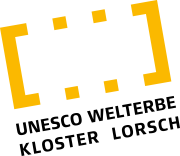
Indoor climate in early medieval houses
The experiments in question took place at various times in winter 2017/18 and 2018/19, partly with modern equipment and clothing, partly with equipment based on early medieval conditions. The chosen “House of the serfs I”, a reconstructed residential building based on a house from the early medieval settlement of Kelheim, was particularly suitable for researching the indoor climate of a lower-class building. The house has several windows, gable holes and entrances as well as two open fireplaces for heating and cooking. Various factors that have a decisive influence on the indoor climate (e.g. air and surface temperatures, humidity, lighting conditions, air quality) were measured continuously at different positions in the house during the test days. In addition, there was a long series of measurements of temperature data from the unoccupied house at different times of the year, enabling a comparison of the occupied and unoccupied situation over the course of the year. Wood consumption for heating and cooking was also documented. The data collected from the indoor climate experiment yielded valuable information and some very interesting results, which not only benefited the didactic educational work, but also provided practical experience with the reconstruction buildings and clues for the interpretation of new finds.
In February 2020, the same methods were used to record the indoor climate in the manor house in order to find out more about the living conditions of the early medieval upper class in comparison to the results in the house of the serfs. The manor house now selected is based on a Late Merovingian find near Bad Urach (Runder Berg) and shows some differences (room layout, roofing, size, number of occupants) to the House of the serfs I. As a result, there were also some differences in the measurement results, particularly with regard to heat distribution, smoke extraction, wood consumption and living quality.
You can find out more about the initial results of the indoor climate experiment here:
Schabacker, Jens: Indoor climate in early medieval houses, in: Laureshamensia. Research reports of the Freilichtlabor Lauresham (Laboratory for Experimental Archaeology) 2 (2019), p. 28 – 43
